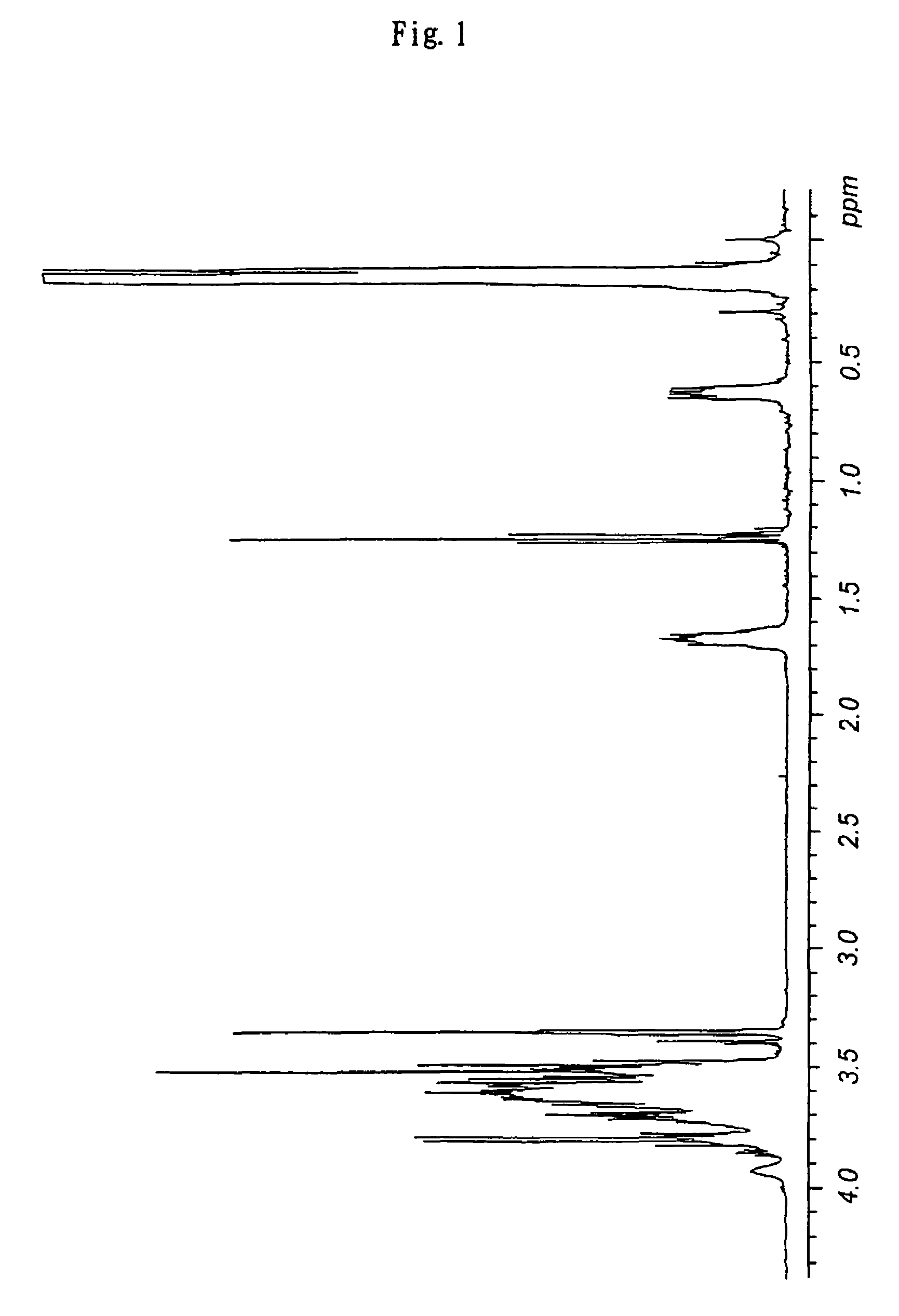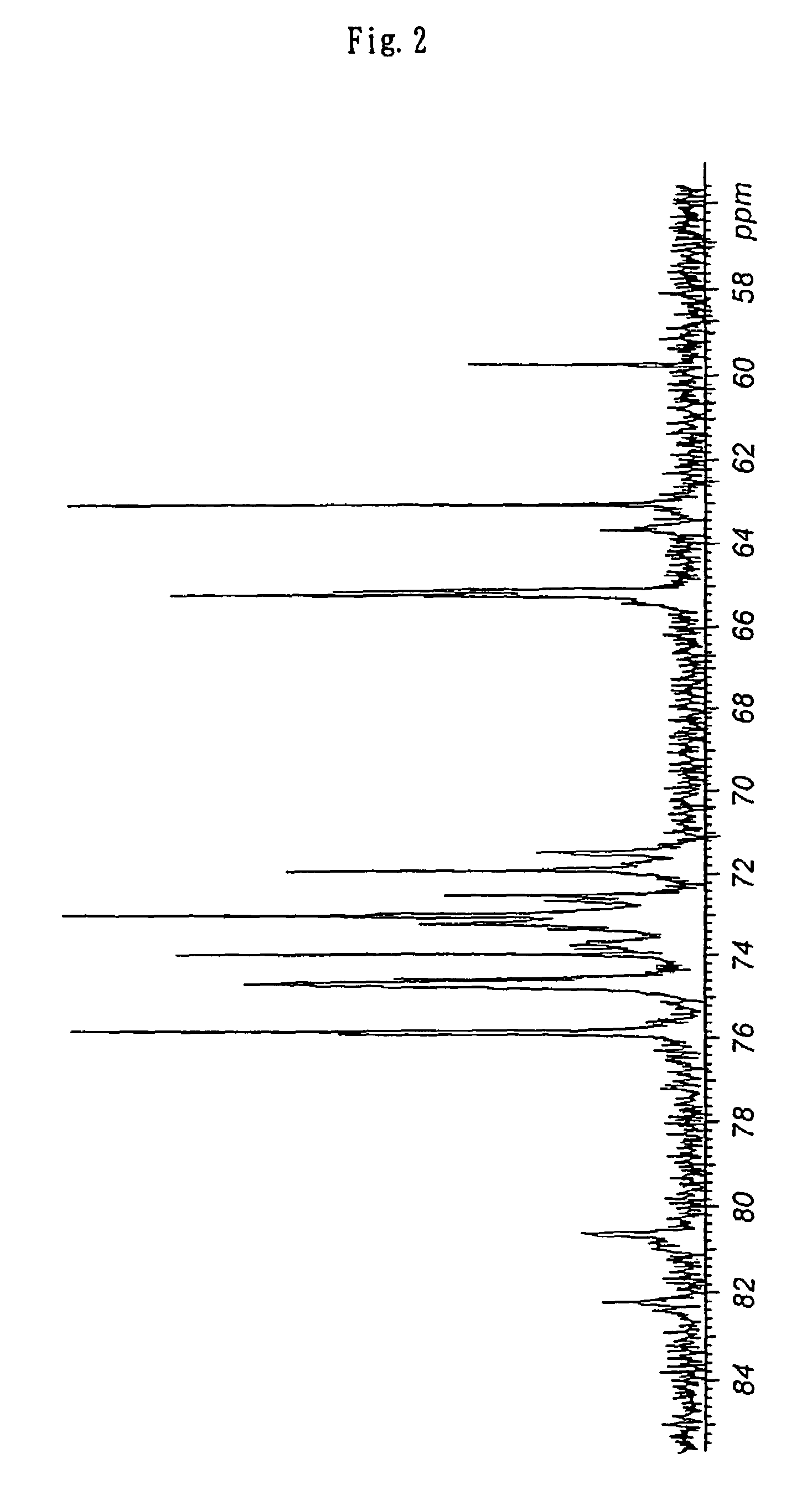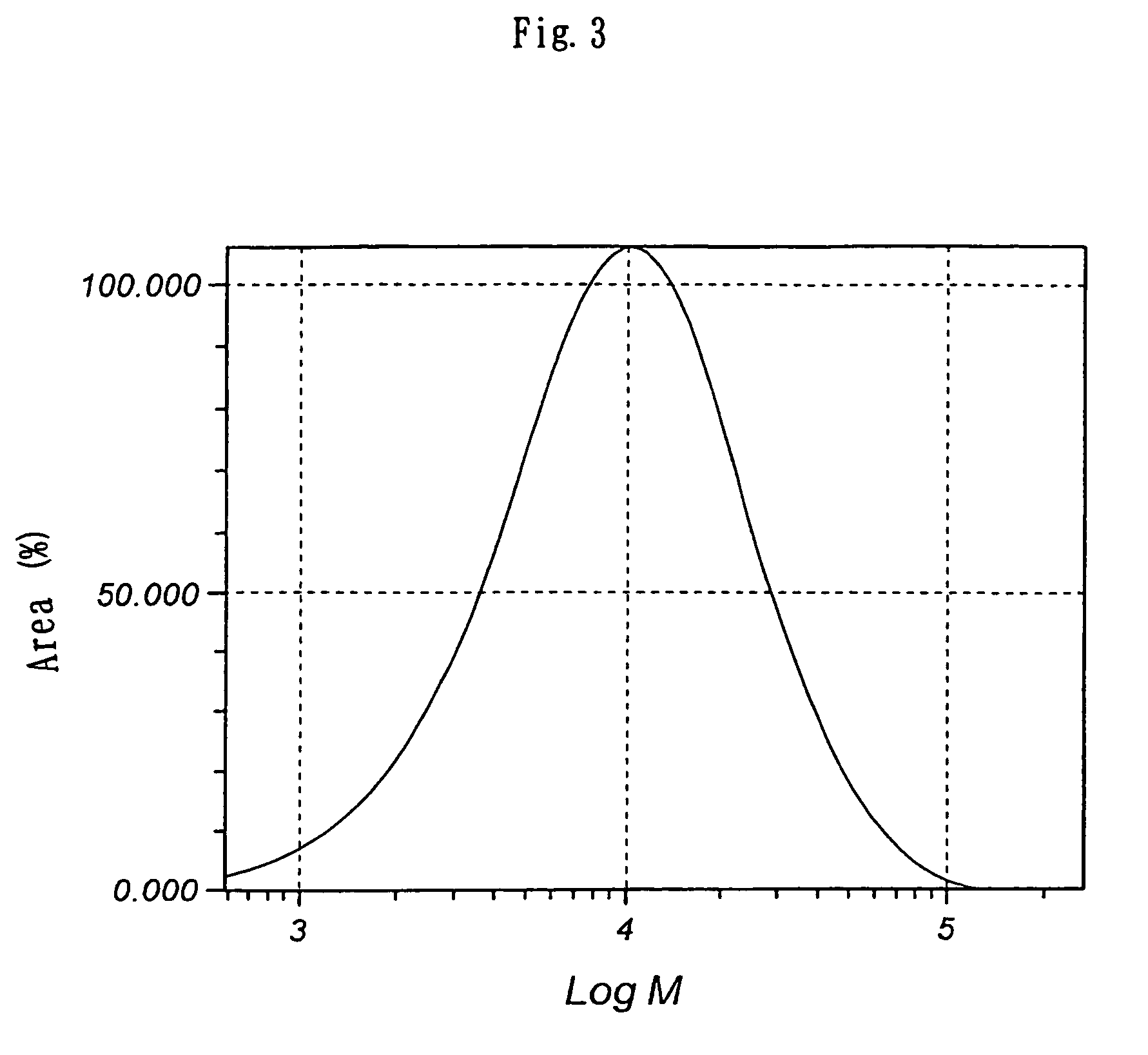Branched polyglycerol-modified silicone
a polyglycerol-modified silicone and polyglycerol-modified technology, which is applied in the field ofbranched polyglycerol-modified silicone, can solve the problems of significantly impairing the advantages inherent in silicones, affecting the stability of silicones, and being less compatible with aqueous solvents, so as to improve the hydrophilicity, improve the coating properties and adsorption, and improve the effect of heat resistance/weather resistance/electrical properties
- Summary
- Abstract
- Description
- Claims
- Application Information
AI Technical Summary
Benefits of technology
Problems solved by technology
Method used
Image
Examples
example 1
Branched Polyglycerol-Modified Silicone A (Having —CH2CH2CH2—O—CH2CH2O— as the Connecting Group)
[0137]Into a flask containing 187 g of carbinol-modified silicone XF42-B0970 manufactured by GE Toshiba Silicones [both ends modified; hydroxy equivalence: 60 mg-KOH / g (average molecular weight: equivalent to 1,870)], 42.1 g of potassium methoxide (30% methanol solution) was added, and the mixture was heated to 60° C. under reduced pressure while being stirred to remove entirely methanol, to give potassium salt of a carbinol-modified silicone as a yellow oil. To the modified silicone heated to 95° C., 74.1 g (5 equivalences) of glycidol was added by using a metering pump over a period of 5 hours while the mixture was stirred vigorously under an argon atmosphere. After heating and stirring additionally for 20 minutes, the mixture was allowed to cool to room temperature and added with 600 mL of ethanol, to give a pale yellow solution. After addition of 34.6 g of citric acid, the mixture was...
example 2
Branched Polyglycerol-Modified Silicone B (Having —CH2CH2CH2—O—CH2CH2O as the Connecting Group)
[0146]To a flask containing 181 g of carbinol-modified silicone KF-6001 manufactured by Shin-Etsu Chemical Co. Ltd., [both ends modified, hydroxy equivalence: 62 mg-KOH / g (average molecular weight: equivalent to 1,810)], 46.7 g of potassium methoxide (30% methanol solution) was added, and the resulting mixture was heated to 60° C. while being stirred under reduced pressure to remove entirely methanol, to give a potassium salt of carbinol-modified silicone as a pale yellow oil. To the modified silicone heated to 95° C., 177.8 g (12 equivalences) of glycidol was added by using a metering pump over a period of 8 hours while the mixture was stirred vigorously under an argon atmosphere. After heating and stirring additionally for 20 minutes, the mixture was allowed to cool to room temperature, to give a turbid milky white paste-like composition. After addition of 800 mL of ethanol and removal o...
example 3
Branched Polyglycerol-Modified Silicone C (Having —CH2CH2CH2—O—CH2CH2O— as the Connecting Group)
[0147]Into a flask containing 200 g of carbinol-modified silicone KF-6003 manufactured by Shin-Etsu Chemical Co. Ltd. [both ends modified, hydroxy equivalence: 22 mg-KOH / g (average molecular weight: equivalent to 5,100)], 2.45 g of finely cut potassium was added under an argon atmosphere, and the resulting mixture was stirred at 60° C. until the potassium granules disappeared, to give a potassium salt of carbinol-modified silicone as an oil. To the modified silicone heated to 95° C., 29.1 g (5 equivalences) of glycidol was added over a period of 5 hours while the mixture was stirred vigorously under an argon atmosphere. After heating and stirring additionally for 10 minutes, the mixture was allowed to cool to 30° C. and added with 800 mL of ethanol. After removal of potassium ion by using a cation-exchange resin, the solution was concentrated, to give branched polyglycerol-modified silico...
PUM
| Property | Measurement | Unit |
|---|---|---|
| length | aaaaa | aaaaa |
| external diameter | aaaaa | aaaaa |
| external diameter | aaaaa | aaaaa |
Abstract
Description
Claims
Application Information
 Login to View More
Login to View More - R&D
- Intellectual Property
- Life Sciences
- Materials
- Tech Scout
- Unparalleled Data Quality
- Higher Quality Content
- 60% Fewer Hallucinations
Browse by: Latest US Patents, China's latest patents, Technical Efficacy Thesaurus, Application Domain, Technology Topic, Popular Technical Reports.
© 2025 PatSnap. All rights reserved.Legal|Privacy policy|Modern Slavery Act Transparency Statement|Sitemap|About US| Contact US: help@patsnap.com



